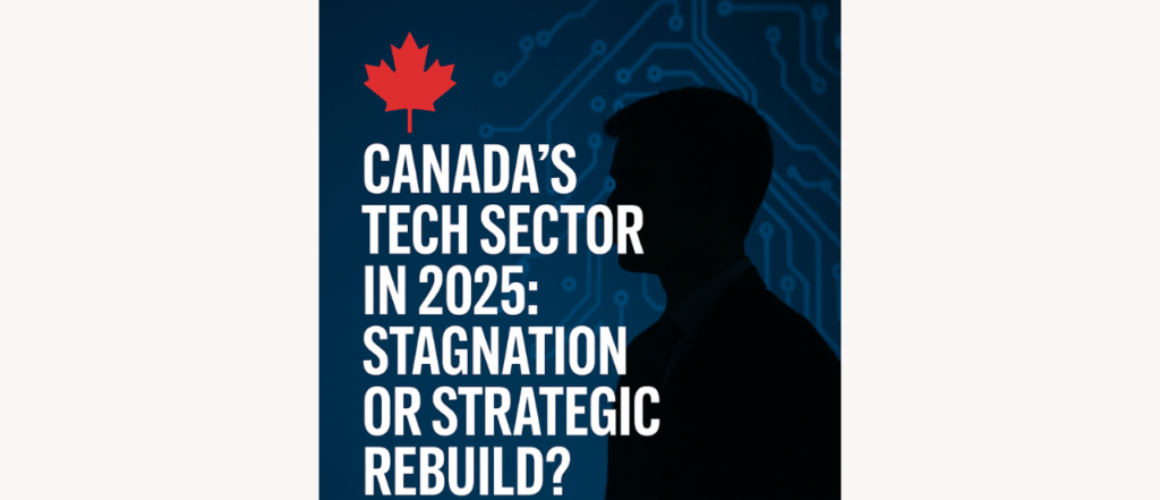Canada’s Tech Sector in 2025: Stagnation or Strategic Rebuild?

Toronto, ON | Waterloo, ON | Vancouver, BC – After explosive pandemic-era growth and a painful post-2022 correction, Canada’s technology sector is entering a phase of strategic rebuilding. Once lauded as North America’s rising innovation hub, the Canadian tech ecosystem in 2025 finds itself in a holding pattern—defined by cautious optimism, tighter capital, and a talent pool still recovering from widespread layoffs.
While the global tech giants maintain their outposts in Canada, and mid-sized software firms are finding their footing, many early-stage startups remain in limbo, caught between rising operational costs and limited access to funding. The result: slower growth, selective hiring, and a noticeable shift from rapid expansion to sustainable survival.
The VC Freeze: Caution Replaces FOMO
Venture capital funding in Canada has declined sharply. In 2021, funding rounds for seed and Series A startups reached record highs. Fast forward to Q1 2025, and early-stage deals have dropped by nearly 40% compared to the same time last year.
Investors are demanding:
-
Proven revenue models
-
Efficient burn rates
-
Clear market differentiation
Gone are the days when “growth at all costs” could secure a seven-figure raise. Today, founders must demonstrate measurable traction and capital discipline to even get in the room.
Large funds like OMERS Ventures and Georgian Partners have pulled back from speculative plays, focusing instead on enterprise SaaS, cybersecurity, healthtech, and AI infrastructure, where demand is more resilient.
AI and CleanTech Still Shine
Despite the broader cool-down, two sectors continue to attract attention:
-
Artificial Intelligence – With Canada maintaining its global leadership in AI research (thanks to hubs in Toronto, Edmonton, and Montreal), funding for applied AI startups remains relatively strong—particularly in B2B automation, fintech, and healthcare.
-
CleanTech – The federal government’s push for climate innovation, combined with tax incentives and climate transition funding, has supported clean battery technologies, carbon capture startups, and green infrastructure software solutions.
Waterloo-based AI diagnostics firm BioQuantify recently closed a $38M Series B, and several Vancouver-based clean energy SaaS companies are reporting strong interest from both U.S. and EU institutional investors.
The Labor Market Shift: From Booming to Balanced
The talent market has also rebalanced. Following layoffs at Shopify, Lightspeed, Clearco, and multiple fintech unicorns, a wave of engineers, data scientists, and UX professionals are re-entering the workforce with tempered expectations.
-
Salaries have plateaued, particularly for junior and mid-level roles
-
Hybrid work remains the norm, but some firms are experimenting with 3-day office mandates
-
Brain drain continues, as top graduates and laid-off veterans explore roles in U.S.-based firms with remote-friendly policies and stronger equity offerings
Universities and bootcamps are adjusting curriculum toward AI ethics, quantum computing, and cybersecurity to stay aligned with market needs.
Public Markets: Tech Stocks Tread Water
Publicly traded Canadian tech stocks remain volatile. While Shopify has regained some footing after its reorganization, companies like BlackBerry, OpenText, and Nuvei have struggled to deliver sustained earnings growth.
The TSX’s lack of high-growth tech listings remains a structural problem, especially as many promising Canadian startups continue to list on U.S. exchanges like the NASDAQ to access deeper capital pools.
There’s growing conversation around launching a TSX Innovation Index, focused on scaling Canadian tech champions and incentivizing dual-listing structures to keep high-value IPOs at home.
Government Role: Supportive But Still Catching Up
The federal government has signaled continued support for innovation through:
-
R&D tax credits
-
A proposed National AI Sovereignty Strategy
-
Funding boosts for Canada’s Superclusters program
-
Public-private accelerator partnerships for quantum and deep tech startups
However, red tape, inconsistent provincial policies, and sluggish grant disbursement are still barriers to scale.
Founders consistently cite lack of procurement opportunities from Canadian governments as a top challenge—arguing that while Ottawa funds innovation, it rarely uses it domestically.
Looking Ahead: A Smarter, Leaner Ecosystem?
While 2025 may not be a breakout year for Canadian tech, it is shaping up to be a foundation year—a time for recalibration, consolidation, and preparing the next wave of scaled innovation.
If capital flows return by late 2025, and interest rates begin to ease, the Canadian tech sector could be poised for a healthier, more disciplined resurgence—one built not just on hype, but on resilience, revenue, and results.